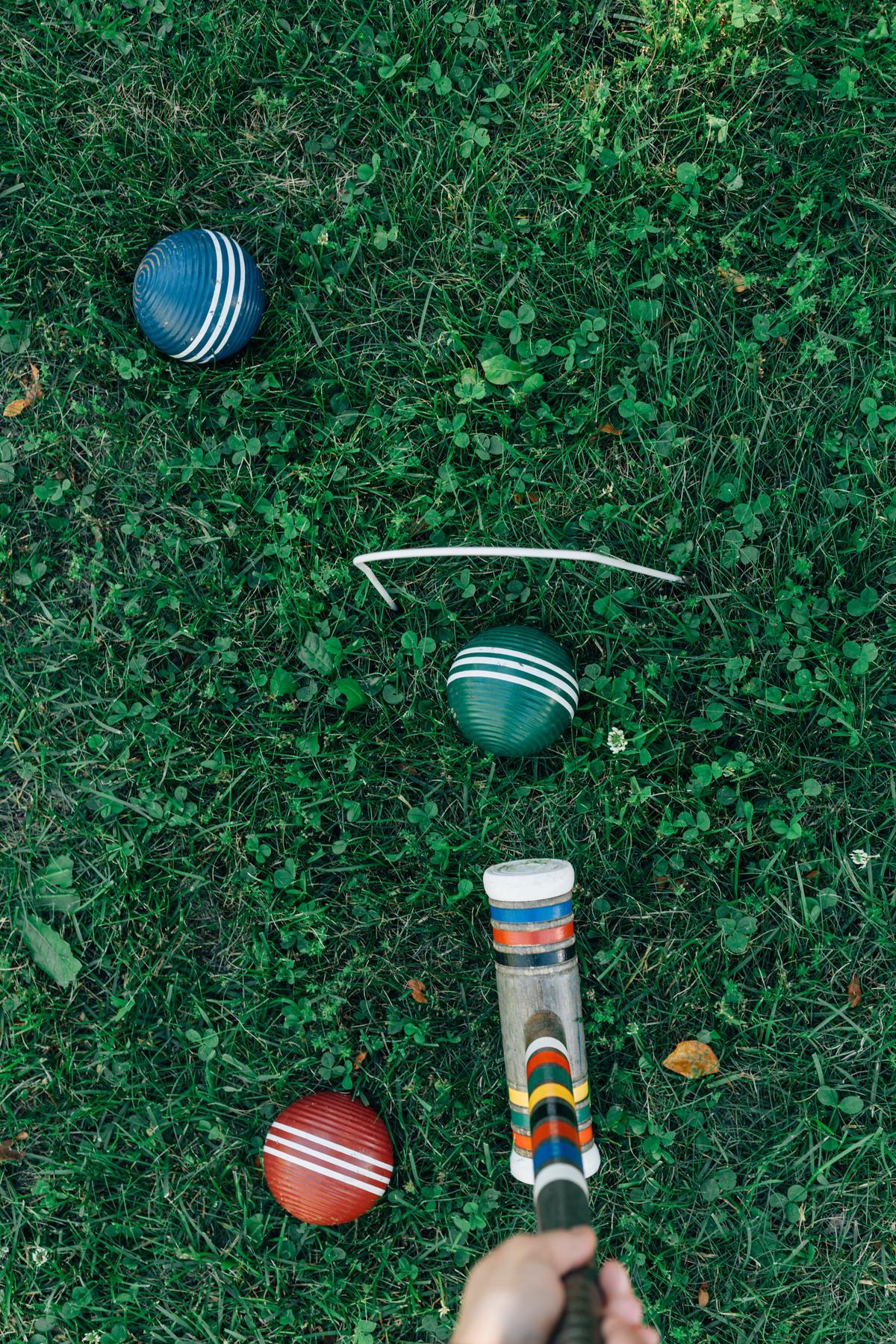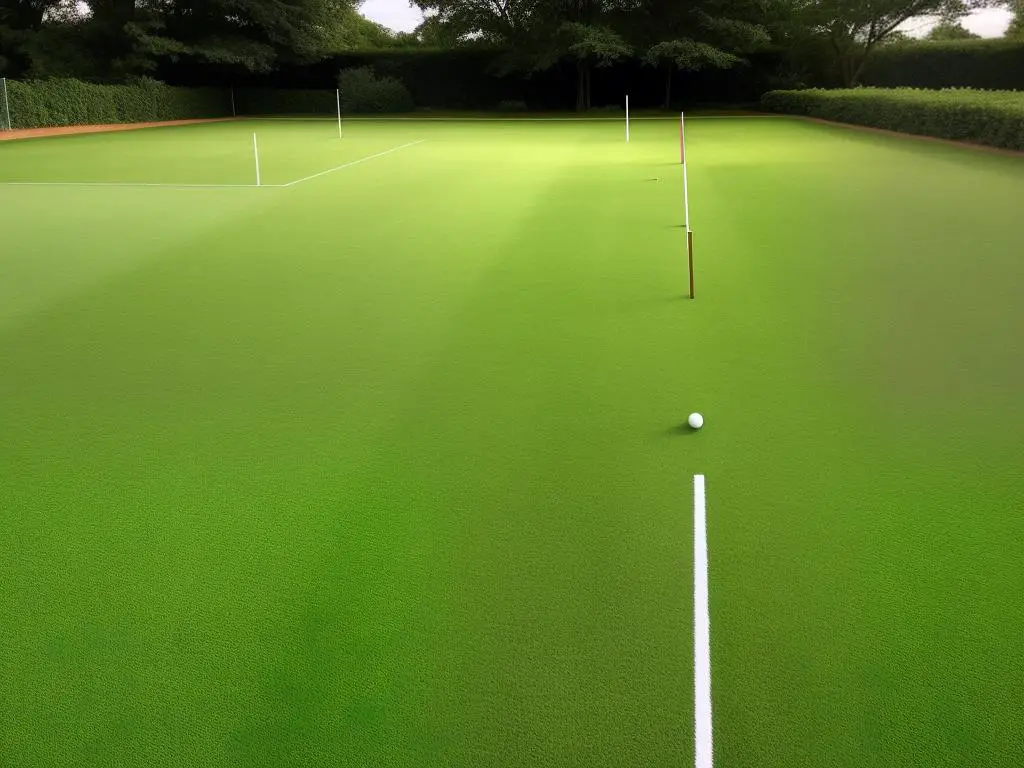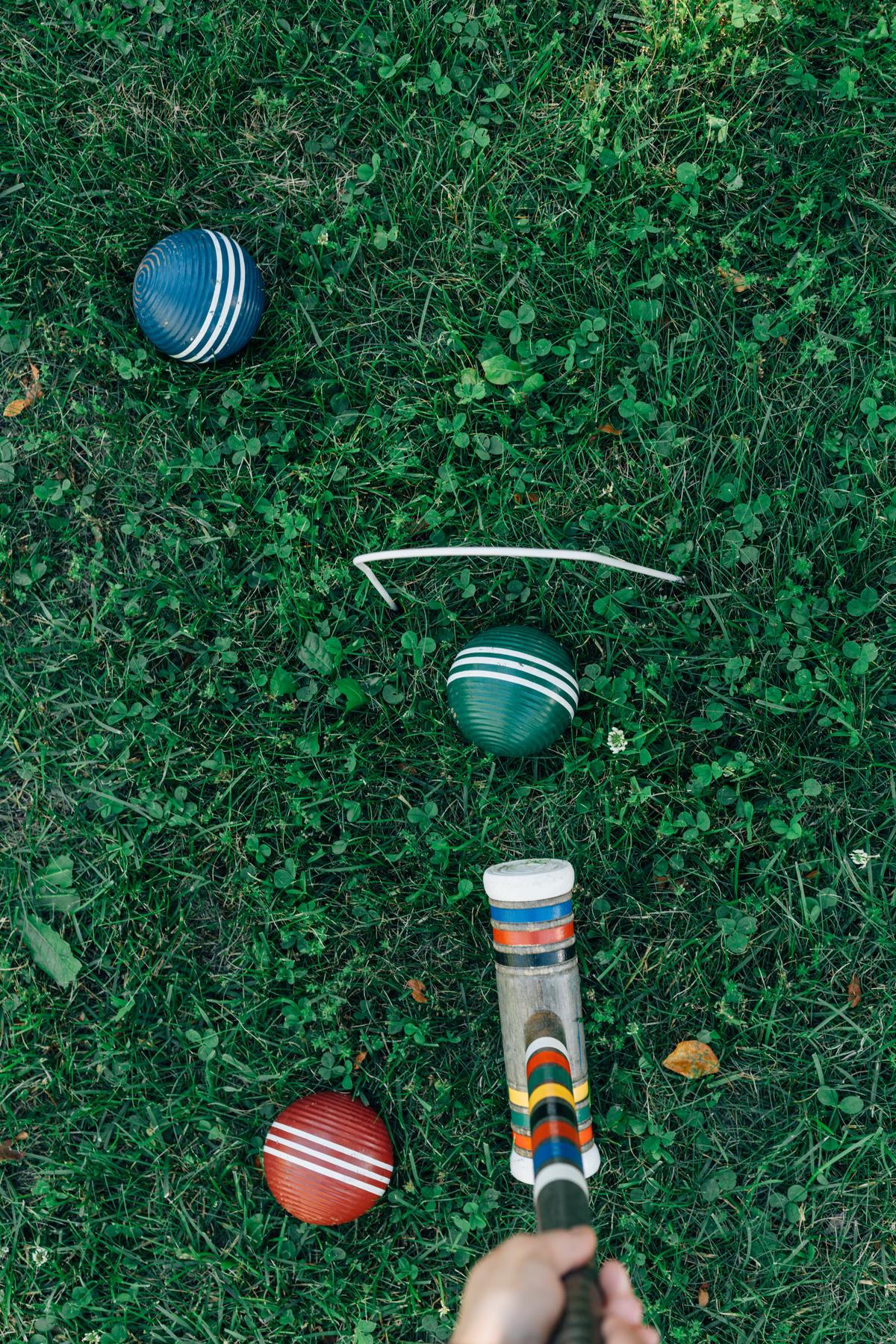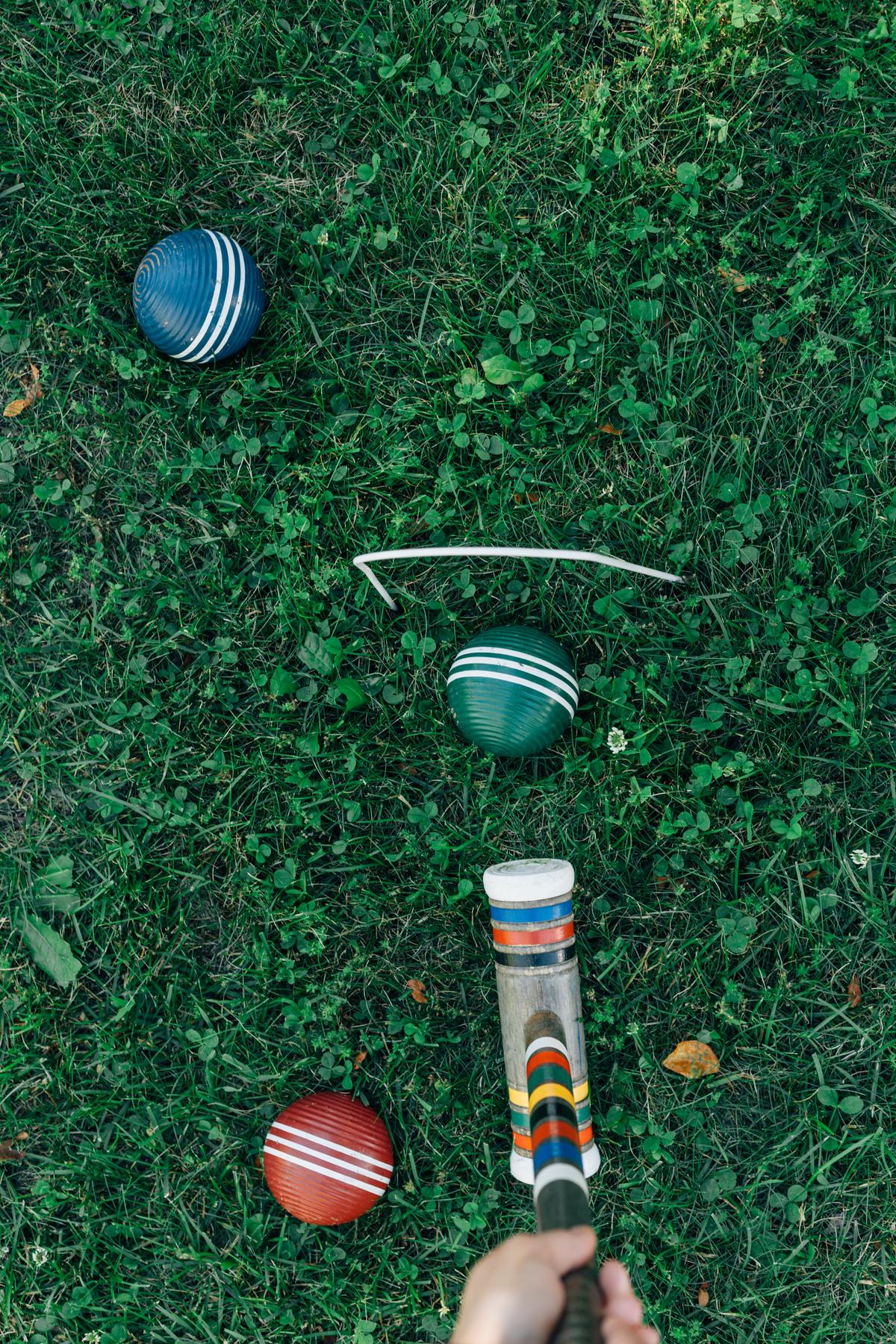Embarking on a journey to master the classic game of croquet is as exciting as it is enriching. Its enduring popularity since the 19th century is a testament to its compelling mixture of strategy, skill, and friendly competition. This pursuit of proficiency doesn’t only introduce you to a game, but into a community replete with camaraderie and sportsmanship. From understanding the fundamental rules and the lingo; to the physical aspect of setting up the court, and fine-tuning your techniques and strategies, the process is as rewarding as it is diverse. Brushing up your croquet skills not only allows you to enjoy this fabulous game but also challenges you to continuously improve and adapt. Truly, there’s more to croquet than meets the mallet.
Understanding the Basic Rules of Croquet
Understanding the Basic Rules of Croquet
Croquet is a popular outdoor game famous for its seemingly complex rules and strategic gameplay. However, once you understand the basic concepts, the game can be quite enjoyable.
Order of Play and Sequence of Hitting
The first step in understanding croquet is to understand the order of play. It typically involves two to four players, who play in teams or individually. Each player has a colored ball, with the order of play being blue, red, black, and yellow. This order is usually marked on the center peg of the croquet field.
In sequence, each player takes a turn by hitting their ball with a mallet. The aim is to pass their ball through a series of hoops, in the correct order and direction, and eventually hitting the center peg. The sequence of the hoops is set out in a double-diamond pattern, starting and finishing at the peg.
Scoring
Points are scored in croquet by passing your ball through the appropriate hoop in the correct order and direction. Each hoop passed scores one point. The player or team first to score 14 points (6 for the hoops and 1 for the peg) wins the game.
Understanding ‘Roquet’
In croquet, when a player’s ball hits another player’s ball, that is known as a ‘roquet’. After making a roquet, the player has two options: pick up their ball and place it a mallet’s length away from the other ball in any direction, or leave the ball where it is.
Regardless of the player’s choice, they then get a ‘croquet stroke’, allowing them to hit their own ball while it is in contact with the roqueted ball, with the aim of sending both balls in useful directions.
The ‘Continuation Stroke’ and ‘Croquet Stroke’
A continuation stroke comes into play when a ball passes through its next hoop in order or makes a roquet. This gives the player another stroke, allowing the continuation of their turn.
A croquet stroke, on the other hand, is earned when a player’s ball hits another player’s ball (‘roquet’). Following the roquet, the player must then place their ball in contact with the roqueted ball and strike their own ball cleanly. This allows the player to move both balls to their advantage.
Remember, success in croquet comes with understanding and mastering these fundamental rules. With time, you will find croquet to be a thrilling and strategic game, full of potential for both fun and competition.

Setting Up the Croquet Court
Introduction to Croquet Court Setup
Croquet is a classic lawn game with roots dating back to the 19th century. A game of strategy and skill, players use mallets to knock their balls through a course of wickets arranged on a playing field, or court. The first step to enjoying a game of croquet is setting up the court correctly. This includes clearly marking boundaries, arranging the wickets properly, and placing the stake in the right location. This guide provides step-by-step instructions on how to achieve this.
Marking the Court Boundaries
Start by marking the court boundaries. The official full-size court in croquet measures 100 feet by 50 feet. However, if space is limited, a smaller court can be used. Use four stakes or other markers to designate the corners of the court.
Remember that the court should be rectangular, with the longer sides running north to south. There should be a clear space beyond the boundary lines to ensure safety for the players; consider an extra 5-foot buffer zone, if possible.
Arranging the Wickets
Next, arrange the wickets. There are nine wickets and two stakes. The pattern for the wickets forms a double diamond and is the same regardless of the size of your court.
Start at one end of the court, place the first wicket and then measure 7 feet and place the second one. Measure 7 feet again and place the first stake.
From the stake, measure another 7 feet and place the third wicket. Then another 7 feet and place the fourth wicket. These four wickets form the first double diamond.
Continue placing wickets every 7 feet until you have placed seven in total.
From the last wicket, measure 7 feet and place the second stake. Then measure another 7 feet and place the eighth wicket, and another 7 feet for the ninth and final wicket. The end result should resemble a double diamond pattern with two stakes outside the diameters.
Placement of the Stake<
The two stakes are placed directly in line with the center two wickets of the court. Stake placement is a critical component of setting up a croquet court as it dictates the starting and finishing point of the game. Make sure stakes are securely entrenched in the ground to withstand the game’s momentum.
Conclusion
Now with the marked boundaries, properly arranged wickets, and correctly placed stakes, your croquet court is all set up. It’s time to grab a mallet, call in the players, and enjoy a fun-filled game of croquet!

Developing Techniques and Strategies
Understanding Basic Techniques in Croquet
Croquet is a challenging and deeply strategic game. Mastering these basic techniques is essential and will greatly improve your skills.
1. The Drive Shot
This is the most basic shot in croquet, often used when hitting a ball to a distant wicket or delivering a rival’s ball far from the court. To do this, place your mallet behind the ball and swing it straight, making sure to follow through after impact. Anticipate potential obstacles in the path and adjust your aim accordingly.
2. The Stop Shot
The stop shot happens when you want to send your own ball a short distance while sending your partner’s or opponent’s ball further away. In this shot, you strike down on your ball. The downward motion stops your ball almost dead in its tracks, while the other ball will travel further.
3. The Roll Shot
The roll shot allows both your ball and the struck ball to move roughly the same distance. Strike the ball in an upward direction, causing both balls to roll forward. This technique is often used in situations where both balls need to be close together after the shot.
4. The Rush Shot
A rush shot is designed to propel your target ball to a specific region of the court while keeping your striker’s ball relatively stationary. Swing your mallet decisively and swiftly, hitting the ball squarely to achieve precise direction and distance control.
5. The Split Shot
This shot allows you to send two balls in different directions. Position the balls in line with the desired final destinations, then with your mallet, hit the striker’s ball at an angle that divides the force between the two balls.
Developing Offensive and Defensive Strategies in Croquet
Offensive Strategies
In croquet, offensive strategies often involve advantageous ball placement and aiming for set-up shots that will allow you to score points in future turns. Frequently, you’ll want to place your balls near wickets or within range of your partner’s balls for potential roquets (striking another ball).
Defensive Strategies
On the other hand, defensive play revolves around stopping your opponents from scoring. This may involve blocking wickets, scattering your opponent’s balls, or placing your own balls in positions that make it difficult for your opponents to roquet them. Always leaving your own ball a considerable distance away limits your opponent’s ability to utilize your ball for beneficial shots.
Keep in mind that the most effective croquet players are able to balance offense and defense, unpredictably switching their play styles and keeping their opponents guessing. As you become more experienced, you’ll begin to see the court as a dynamic battlefield, full of opportunities for strategic genius.
Remember, practice makes perfect – the more you play, the better your techniques and strategies will become!

Practicing and Refining Your Skills
Understanding the Game of Croquet
The game of croquet is steeped in strategy and precision. As an enthusiast or hobbyist, your ability to adapt and improve hinges on consistent practice, learning from past games, and honing your skills for higher levels of precision and consistency.
Basic Strategies & Techniques
The first step in getting better at croquet involves understanding the basic strategies and techniques of the game. This includes mastering different golf shots like the roquet, the croquet, the roll shot, and the split shot. Spend some time each day practicing these different shots until you’ve mastered their form and delivery.
The Art of Practice
When practicing, don’t just aim for the balls down the court, instead, imagine them as actual opponents in a real game scenario. In a game, your opponent’s strategy would likely require you to adjust your own to counter effectively. Envision different strategic situations and adjust your shots accordingly. This visualization exercise will help you adapt to realistic game situations, improving your precision and flexibility in the process.
Skill Development Through Game Play
To develop your game skills, consider engaging other players in casual matches. This allows you to apply the techniques and strategies you’ve learned in a real game situation. Pay attention to your opponents’ strategies and adjust your gameplay accordingly.
Croquet is a game of strategy and predicting your opponent’s next move is a crucial aspect of gameplay. By noting your opponent’s playing style, you can refine your game plan to counter their strategy, pushing you to adapt and improve.
Consistency Is Key
Consistency can take time to develop in croquet, but it’s a crucial part of mastering the game. Incorporate regular practice sessions into your weekly routine and try to maintain the same form and precision in each shot. The more you practice, the more your movements become second nature, increasing your chances of executing them successfully during gameplay.
Analyzing Past Games
Lastly, just as with any game, sometimes the best strategy is to learn from past experiences. Look back at your past games and identify opportunities for improvement. Did you lose because of a poor strategy or because your shots lacked precision? Use these insights to amend your playstyle, improve your skills, and ultimately, better your game.
Croquet is a rewarding game that requires time and dedication to master. But with patience, consistent practice, and careful analysis of past games and opponents’ strategies, you can gradually improve and refine your skills, becoming a formidable player in the process.

Ultimately, the journey to becoming proficient at croquet extends far beyond the boundary lines of the court. It’s a game of the mind as much as it’s a physical endeavor, beckoning players to continually refine their strategies, techniques, and understanding. Through this journey, you’ll find not only development in dexterity and strategy but also in patience, flexibility, and sportsmanship. The hustle and subsequent triumph you find in roqueting a ball, efficiently passing through a wicket or successfully executing a stop-shot or split-shot, makes every moment practicing worth it. So, embrace the mallet, line up your shots, and let the magic of croquet sweep you into its exciting, engaging world.
Frequently Asked Questions about Learning to Play Croquet
A: Croquet is a classic outdoor sport that involves using mallets to hit balls through hoops, aiming to complete a course in the fewest strokes.
A: In Croquet, players take turns hitting balls with mallets, aiming to pass through a series of hoops and finish by hitting the center peg. The player who completes the course first wins.
A: Croquet can be played with 2 to 6 players, making it a versatile game suitable for small gatherings or larger competitive matches.
A: Yes, Croquet is a game that can be enjoyed by players of all ages, providing a leisurely yet engaging outdoor activity.
A: To play Croquet, you need a croquet set that includes mallets, balls, hoops, and a center peg. The game is typically played on a grassy lawn.
A: Absolutely! Croquet is well-suited for backyard play, and it can also be enjoyed at parks and other open spaces with a grassy surface.
A: The duration of a game of Croquet can vary depending on the number of players and the size of the course. On average, a game can last around 1 to 2 hours.
A: Yes, mastering techniques like the rush, split shot, and roquet can enhance your gameplay and strategic choices.
A: Yes, many communities have Croquet clubs that offer organized play, tournaments, and social events for enthusiasts.